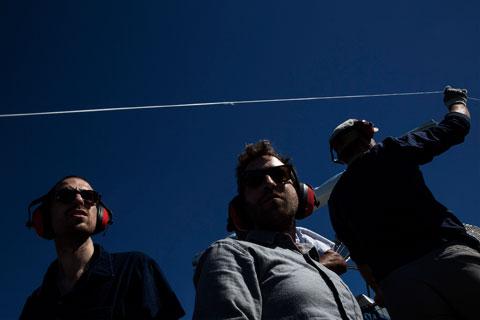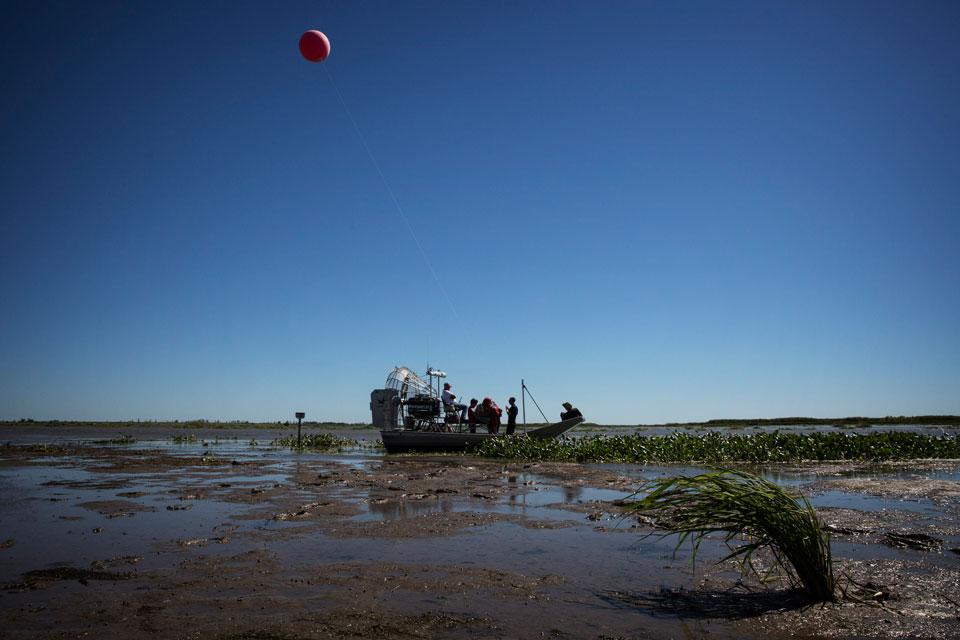This story was co-published with Source.
On October 13, we stepped off a boat in the middle of the Mississippi River Delta onto brand new land. The ground, about six months old, was a bit squishy but it held firm under our boots. It was put there by engineers working on a quixotic project to save Southeast Louisiana, which is sinking into the Gulf of Mexico at a rate of about a football-field every hour.
We had covered this area before, as part of our interactive story “Losing Ground.” We came here on a brisk but warm morning to bear witness and, especially, to take photos.
For our previous project, we were able to use freely available imagery from NASA’s Landsat 8 satellite to document the sinking of the delta. Those photos have a resolution of up to 15 meters to a pixel — ideal for big geographic areas like southeast Louisiana’s iconic “boot.”
But for our follow-up piece about the humongous patchwork of coastal restoration efforts including Louisiana’s Coastal Master Plan, we wanted to zoom into much smaller areas, highlighting a few of the projects that state, local and federal agencies have put in place to reverse some of the damage. Many of those projects would appear as tiny specks in Landsat’s sweeping view of the coastline. We needed a better aerial vantage point to show the progress of projects that in many cases were relatively small — some only a couple of thousand feet across.
Thankfully, the U.S. Geological Survey, through its EarthExplorer website, offers a vast cache of high-resolution digital images. These “orthoimages” are images taken from airplanes that have later been georeferenced — warped to fit onto a map — and stitched together into much larger images by the agency. In addition to true-color photographs, the orthoimages include an infrared band, which is required to work with the images, as it lets you easily and accurately isolate land and water — a key feature in delta regions where water can look like land because it is so heavy with sediment.


